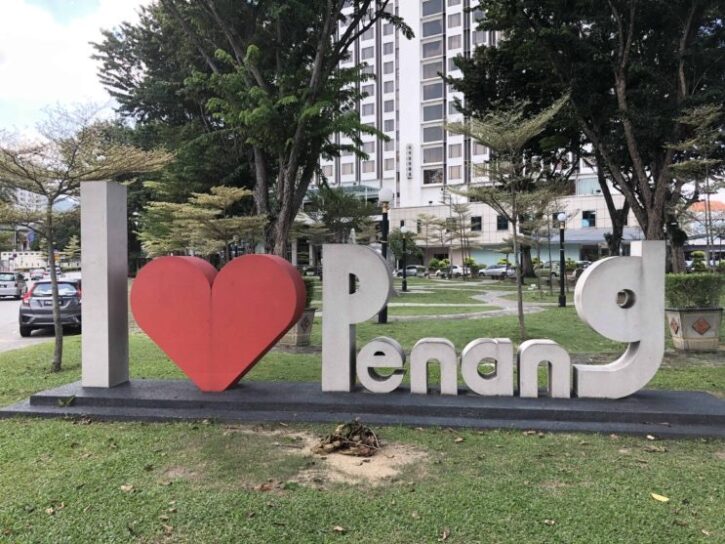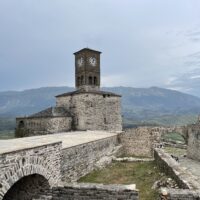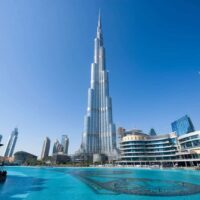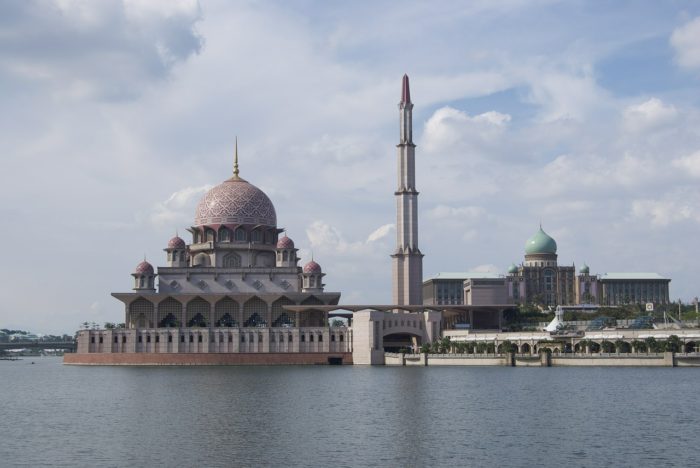As the oldest city in Malaysia, Georgetown, the capital of the state of Penang is special in so many ways. To me, the architecture and food top the list of the most exciting things to see and experience. Besides this, its colonial past has a special appeal and its dramatic landscape and beautiful beaches makes for a great holiday.
My visit was rather hurried, I admit, and I felt that time does pass rather quickly in Georgetown but in a splendid way. It is possible to see ad experience pretty much everything in three days – but I promised myself to return for a longer stay here.
Besides being a UNESCO city, it is also a food lovers paradise
For the history buff
To put it simply, George Town is older than Malaysia’s capital Kuala Lumpur itself. Founded in 1786 and along with Malacca (another historic city) it was inscribed as a UNESCO World Heritage Site in 2007. Given its history, exploring this city is like a trip back in time. Fortunately, much of the original structures and buildings are remarkably intact. That is not saying that the city has not adopted modernism – it has and wonderfully so and given rise to a booming nightlife, magnificent architecture and turned into the culinary capital of the country.
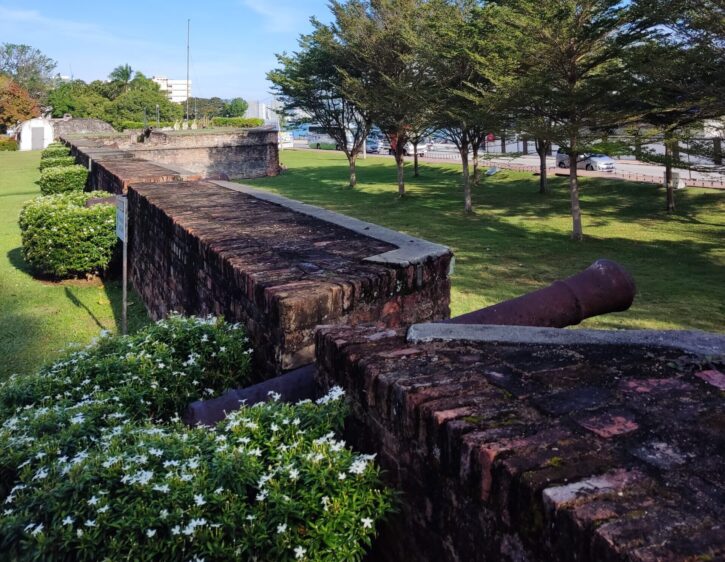
Evidence of a Colonial Era
I visited Georgetown not so long ago whilst backpacking in Malaysia and I have put it on my list of places to return to it simply because of its vibe and a longer exploration of its rich heritage. Back then it was my spot for a visa run but there are things about this place that refuse to leave my mind, particularly its colonial past.
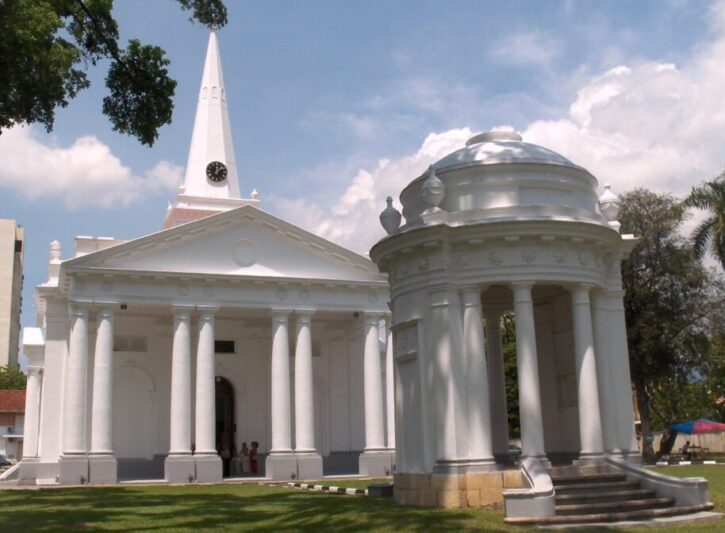
Georgetown’s history is both volatile and fascinating and resonates with its colonial streets and heritage sites. The Portuguese first tried (and failed) to colonize Penang. Then came the British to take over and finish the job and named it ‘Prince of Wales Island’ with Georgetown as its capital.
Over the years, this name changed but the island’s long colonial British history is still echoed in the modern-day through its old-world style British architecture and its English and European-esque religious and public buildings – all of which beautifully contrast with Georgetown’s Malay and Chinese buildings and monuments.
When walking through the streets of Georgetown, I have felt as though I was hopping countries – England, China, Malaysia and sometimes even India. But the finest examples of colonial architecture were to be found in the Queen Victoria Memorial Clock Tower, the High Court, the City Hall, the Wisma Building, the Georgetown Dispensary, Anglican St George’s Church and the Penang State Museum.
A little further away from the city is the only Georgian style mansion remaining in Malaysia, the Suffolk House. The mansion was built to be the main residence of the British governor of Penang in 1805.
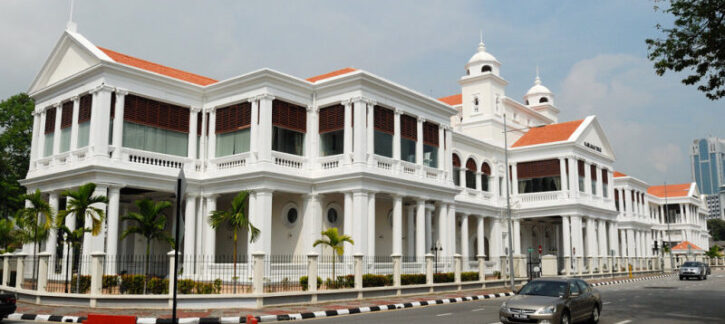
Must know: Built over six hundred years ago, Khoo Kongsi is undoubtedly one of Southeast Asia’s most historic clan houses. It is also known as ‘Dragon Mountain Hall,’ this building marks the presence of the Chinese in Penang and is one of the region’s most famous kongsi. It is a feast for your eyes – with beautiful ceramic sculptures, murals and statues highlighting its beauty.
Street Food in Georgetown
The biggest draw in Georgetown is its food and thanks to its colonial past it has remained the melting pot of Malaysian, Chinese, Indian and a hint of Japanese cultures. Eating is a must do activity in this city.
While I am not exactly a ‘foodie’ this town made me into one as I ate my way from one stall to another and not once worried about adding the pounds on me. The best way to try the street food is of course at food stalls (which are everywhere) and they are rather reasonably priced. I am not a fan of food courts so this street food binging worked out just fine – and no, not once did I have to worry about hygiene!
My personal suggestion to anyone wanting to explore the street food scene in Georgetown is to head to Lebuh Chulia, a street filled with bars, restaurants and hotels. At the intersection of Love Lane and Lebuh Chulia, you’ll see street food stands selling noodles, rice dishes and so much more. For those craving for something Indian, well, it’s right there, alongside noodles and rice, on the corner of Lebuh Queen and Lebuh Pasar.
Don’t miss the Indian Chai there – people come here just for that brew.
Most of Georgetown’s streets are lined with food vendors but Penang Road Market is amongst the more popular street food hubs, besides food courts peppered all over town. When hunting for special foods to eat, don’t miss the Asam laksa soup, oyster omelettes, otak-otak and of course, nasi lemak (fat rice), which is Malaysia’s signature national dish.
Top tip: Join a food tour which gives you every chance of eating like a local.
Street Art in Georgetown
A visit to Georgetown means admiring its street art too – they are quite unique and makes for a perfect day-activity hunting for children on swings and cats. Yes, cats. This town has a special place for cats in their homes and on the public walls and they are literally all over the city.
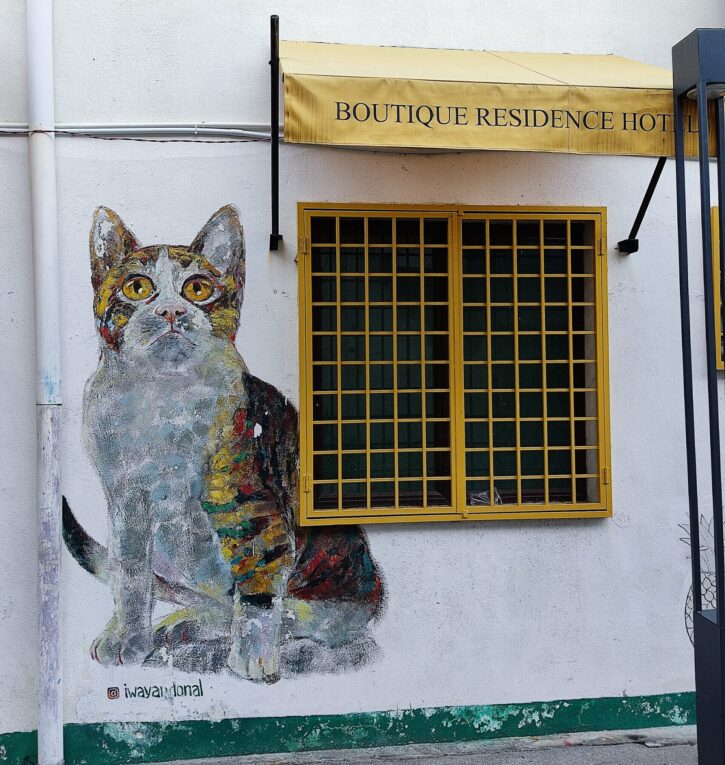
The best way to see the street art in Georgetown is to walk around by yourself, there are maps which detail exactly where each famous piece is, so make sure to get one from your accommodation in Georgetown when you arrive. Most of the famous pieces are around Armenia Street and you’ll know when you reach them because they’ll be a crowd.
Tip: If you want to get photos of the street art in Georgetown with no people in them, start early as possible, before the camera wielding tourists take over the city.
These art pieces didn’t just appear on the walls – but was planned systematically. In 2012, the city hired legendary Lithuanian artist Ernest Zacharevic to spruce up the Chinese shophouses seen all over the town and thus a delightful collection of murals appeared.
I personally think there are two lovely examples of street art is ‘The Little Girl in Blue (on Muntri Street, which is also considered to be one of Zacharevic’s most famous pieces) and the ‘Boy on Motorcycle.’
For the view, go to Komtar Viewing Platform
Now that you have seen the city from ground level, it is a great idea to get a birds’ eye view, too, right? The best way to do it? Of course – the Komtar Viewing Platform. You really can’t miss this building – it is the tallest in the city. It has a skywalk and a viewing deck – in fact to me it was like a wrap up of the brief visit. The best times naturally are sun rise or sunset (the sunsets are spectacular, I am told) but any time of the day is a great, in my opinion. You can even get an immersive experience at the top like that 7D Motion Theatre and a Jurassic Research Centre.
While in Georgetown, don’t miss –
There are two famous Mansions (The Blue Mansion and the Green Mansion) – Cheong Fatt Tze Mansion (known as La Maison Bleu) is a Qing Dynasty Chinese merchant house with a distinguished design painted in an eye-catching blue. This historical site now is now a boutique hotel but guided tours are available. The Pinang Peranakan Mansion (Green Mansion) is a museum dedicated to Penang’s Peranakan heritage. Located on Church Street, it was once the residence and office of a 19th-century Chinese tycoon, Chung Keng Quee.
Whatever you do, don’t miss this –
Cake in China House, Penang’s Longest Café. There are over thirty varieties to choose from. This cool café was, once upon a time, a house where 20-30 families lived. Nowadays families do not live in these houses but many of the buildings remain in the original design.
Know your street food –
- Char Koay Teow consists of Koay Teow (white flat rice noodle) stir-fried with chives, eggs, crunchy bean sprouts and prawns.
- ‘Asam’ means sour in Malay. The broth for this Laksa is slightly sour from the use of tamarind and savory from flaked Mackerel. I found the combination of these two flavors is simply out of this world.

